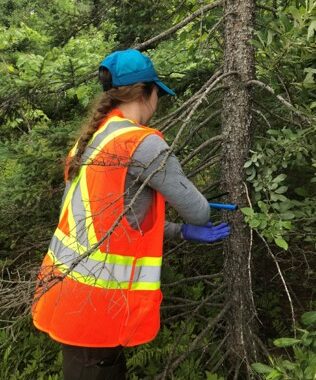
During the Nova Scotia gold rush (early 1860’s to mid-1940’s), over 300 gold mines were established across the province, including several within what is today the Halifax Regional Municipality (HRM). Many of these sites were never remediated and are often found near local residential areas.
Historic mining methods involved a mercury-gold amalgamation process that resulted in large amounts of mercury being lost to the environment through gaseous emissions and dumping of crushed waste-rock material, called tailings. Gold mine tailings from this period are also highly contaminated with arsenic, which is found naturally in local bedrock materials. As a result, unreclaimed mine tailing sites in Nova Scotia remain highly contaminated with both mercury and arsenic.
My honour’s project examines Spruce tree core and soil samples from four gold mine tailing sites in the HRM, as well as several non-contaminated reference sites. I will measure mercury and arsenic levels in these samples to quantify the current levels of both contaminants in the ecosystem. Further, through studying past seasonal growth rings in tree core samples, I will determine temporal trends of mercury and arsenic in each site and examine the relationship between soil and core concentrations.


 Acadia University
Acadia University